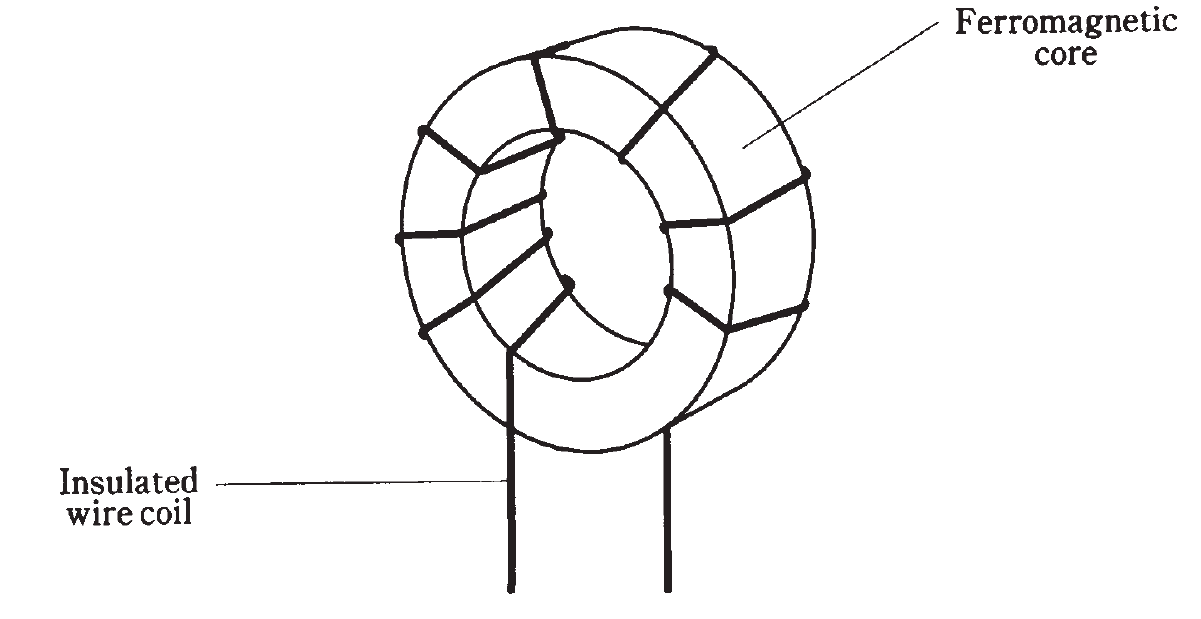


 الفيزياء الكلاسيكية
الفيزياء الكلاسيكية
 الكهربائية والمغناطيسية
الكهربائية والمغناطيسية
 علم البصريات
علم البصريات
 الفيزياء الحديثة
الفيزياء الحديثة
 النظرية النسبية
النظرية النسبية
 الفيزياء النووية
الفيزياء النووية
 فيزياء الحالة الصلبة
فيزياء الحالة الصلبة
 الليزر
الليزر
 علم الفلك
علم الفلك
 المجموعة الشمسية
المجموعة الشمسية
 الطاقة البديلة
الطاقة البديلة
 الفيزياء والعلوم الأخرى
الفيزياء والعلوم الأخرى
 مواضيع عامة في الفيزياء
مواضيع عامة في الفيزياء|
Read More
Date: 18-4-2021
Date: 9-4-2021
Date: 17-4-2021
|
Toroids
Inductor coils do not have to be wound on cylindrical forms, or on cylindrical ferromagnetic cores. In recent years, a new form of coil has become increasingly common. This is the toroid. It gets its name from the donut shape of the ferromagnetic core. The coil is wound over a core having this shape (Fig. 1).

Fig. 1: A toroidal coil winding.
There are several advantages to toroidal coils over solenoidal, or cylindrical, ones. First, fewer turns of wire are needed to get a certain inductance with a toroid, as compared with a solenoid. Second, a toroid can be physically smaller for a given inductance and current-carrying capacity. Third, and perhaps most important, essentially all of the flux in a toroidal inductor is contained within the core material. This reduces unwanted mutual inductances with components near the toroid.
There are some disadvantages, or limitations in the flexibifity, of toroidal coils. It is more difficult to permeability-tune a toroidal coil than it is to tune a solenoidal one. It’s been done, but the hardware is cumbersome. Toroidal coils are harder to wind than solenoidal ones.
Sometimes, mutual inductance between or among physically separate coils is wanted; with a toroid, the coils have to be wound on the same form for this to be possible.



|
|
|
|
4 أسباب تجعلك تضيف الزنجبيل إلى طعامك.. تعرف عليها
|
|
|
|
|
|
|
أكبر محطة للطاقة الكهرومائية في بريطانيا تستعد للانطلاق
|
|
|
|
|
|
|
أصواتٌ قرآنية واعدة .. أكثر من 80 برعماً يشارك في المحفل القرآني الرمضاني بالصحن الحيدري الشريف
|
|
|